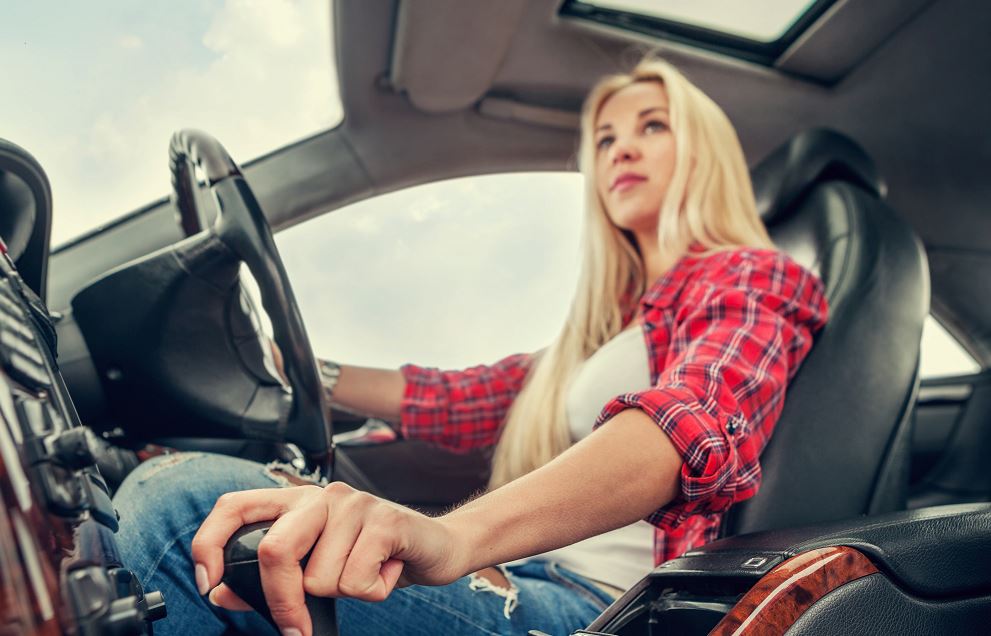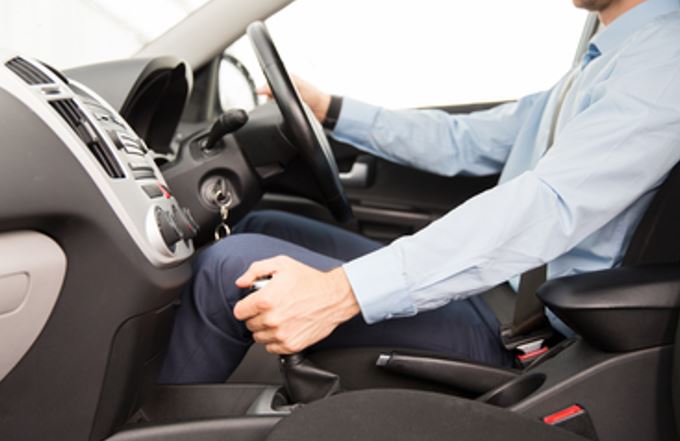If you're learning to drive or buying a new car, you'll need to decide: manual or automatic? If you're wondering which one’s better what each one's like to drive, our guide will help.

|
In this article |
What do car gears do?
If you’ve ever struggled up a hill in fourth gear, you’ll know how important gears are for driving. Gears let you choose force vs. speed depending on the driving conditions.
- Lower gears give you more force for pulling away or climbing hills.
- Higher gears let you drive at higher speeds.
Being able to switch between gears helps you drive smoothly and efficiently.
What's the difference between manual and automatic transmission?
Most people are familiar with manual cars. Traditionally, they've been the most common type of transmission in the UK. But in recent years, automatic cars have become more popular. This might be partly because people are buying more electric cars, which are automatic.
Manual transmission
Manual cars have a clutch pedal and a gear stick which usually has 5 gears.
To change gear, you press the clutch pedal down. That temporarily disconnects the engine from the transmission. You then select the next gear using the gear stick and release the clutch.
Learn more about clutches in cars and the signs of manual clutch failure.
Automatic transmission
In automatic cars, the gearbox picks the right gear for the car's speed without the driver having to do anything. It automatically disconnects the engine from the road wheels while changing gear.
Automatic cars don’t have a clutch pedal or a gear stick. But they do have a shifter, which lets you choose between park, reverse, neutral and drive.
Learn more about how clutches in manual and automatic cars work.
We provide 24/7 roadside assistance.
Should I learn to drive in a manual or an automatic car?
There are a couple of things to bear in mind which could help you decide whether learning in a manual or automatic car is the best option.
Automatic licences don’t cover manual cars
If you learn to drive in an automatic car and get an automatic licence, you won’t be able to drive a manual car. You’ll have to re-learn in a manual car and take a new driving test if you want to drive a car with a gear stick.
If you learn in a manual car, your manual licence will cover you in both manual and automatic cars. So if you want to keep your options open after you pass, learning in a manual may be the better option.
You can learn more about types of driving licence on the gov.uk website.
Think about cost
Driving lessons can be a big investment for young learners. It may be quicker to learn to drive in an automatic because you won’t have to learn about gears and clutch control. That could save money on lessons.
But on the other hand, automatic lessons often cost more to begin with. And once you pass, automatic cars could cost more to insure than manual ones as they may be more expensive. Older automatics are also less efficient, making them more expensive to run.
It’s best to do the maths and weigh up the costs to work out which is best before you start.
Find out more about learning to drive in an automatic.
Learning to drive? Book driving lessons online with AA Driving School.

Should I buy an automatic or manual car?
Automatics might suit drivers looking for a simple and easy driving experience. They can be good if the traffic where you live is stop-start, like in a city, as you don't have to change gears constantly.
Manuals might suit drivers who want a more involved driving experience with more control.
Driving an automatic car
Pros include:
- Many people find automatics simpler to drive.
- Learning in an automatic can let you concentrate more on speed and road position.
- Automatics can be more reliable than manuals.
- Modern automatics with 8 gears are more efficient than manual equivalents.
Cons include:
- If you pass your test in an automatic, your licence will only let you drive automatics.
- Automatic cars are more expensive to buy, whether new or second-hand.
- As they're more complex, repairs are more expensive if automatics go wrong.
- Some people find automatic cars less interesting or exciting to drive.
- Older automatics are less efficient than manuals as they have fewer gears and weigh more.
- Some automatics can’t be towed with all wheels on the ground, which you may need to think about if you break down.
Driving a manual car
Pros include:
- A manual driving licence lets you drive automatic cars too.
- Manuals are more common than automatics in the UK.
- People who want ‘a driver’s car’ might find a manual more interesting to drive.
- Manuals are more efficient than older automatics as they have more gears and are lighter.
Cons include:
- Some learners find the clutch and gear stick difficult to master.
- Electric cars don’t have a gearbox, so automatics might be the norm in the future.
- Manuals are less efficient than new automatics with 8 gears.
Buying your next car? AA Cars helps you find approved used cars.
What are semi-automatic cars?
If you like the best of both worlds, then a semi-automatic gearbox might suit you. It’s also sometimes called an automated manual or clutchless manual transmission.
With semi-automatic transmission, you can usually choose between fully automatic and manual modes. But unlike a manual car, there’s no clutch. Instead, drivers can use a switch or paddle to change gears and the car takes care of the clutch electronically. In that way, it’s like an automatic.
What's continuously variable transmission (CVT)?
A CVT car is a type of automatic that doesn't use gears. Instead, it uses a system of belts and pulleys. They create a range of gear ratios that constantly adapt to different driving conditions.
You won't notice any gear shifts when accelerating in a CVT car. It can also be more fuel efficient, especially for stop-start urban driving.
What's a twin-clutch automatic gearbox?
In a twin-clutch automatic, the gear sets are controlled by 2 separate clutches. One is for the odd-numbered gears and the other for the evens.
As one gear's engaged, the electronic system pre-selects the next. That makes changing gear simple and nearly seamless as it shifts from one clutch to the other by hydraulic control.
